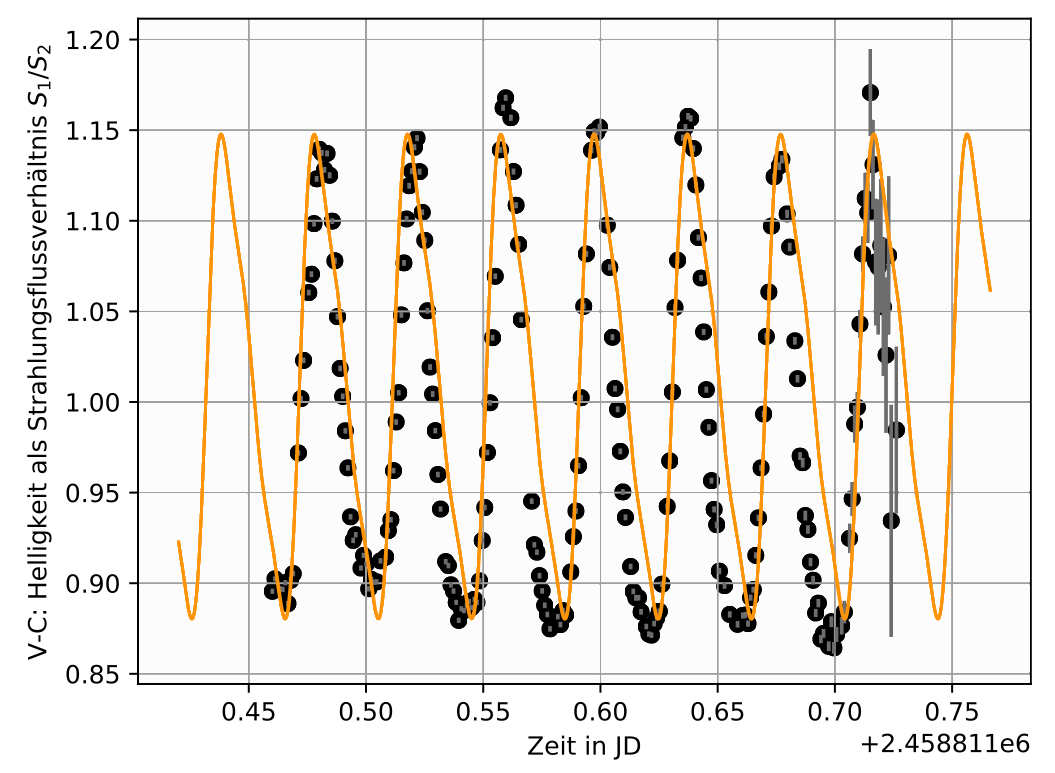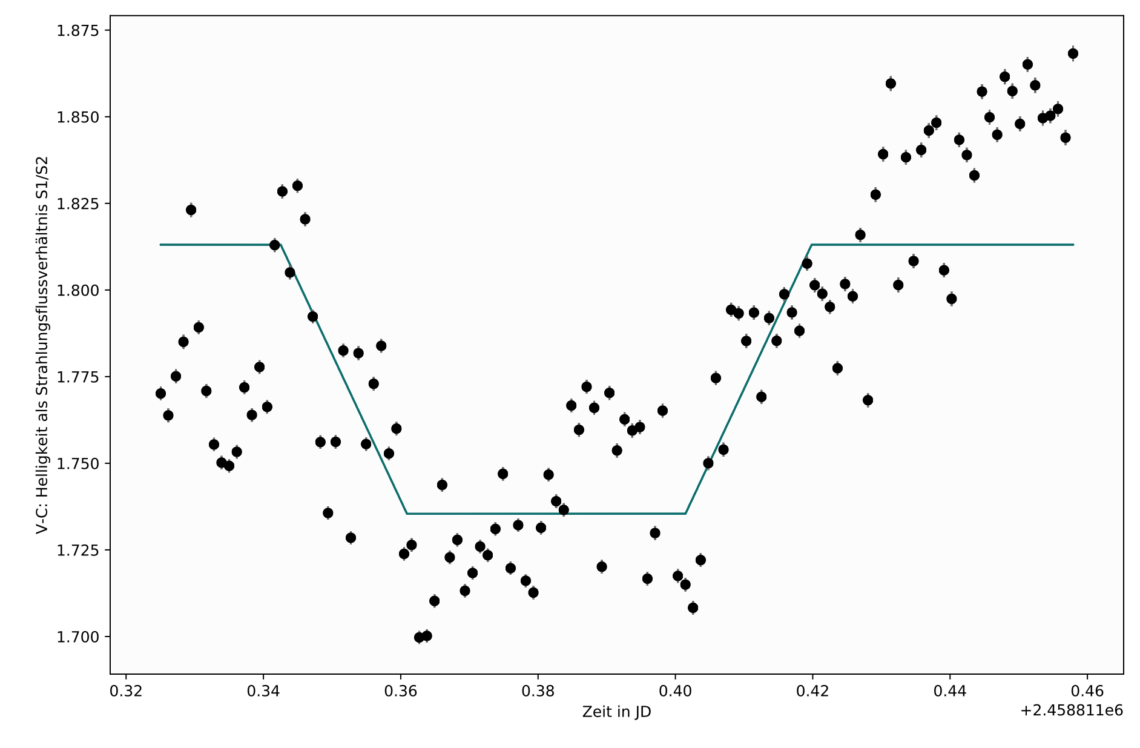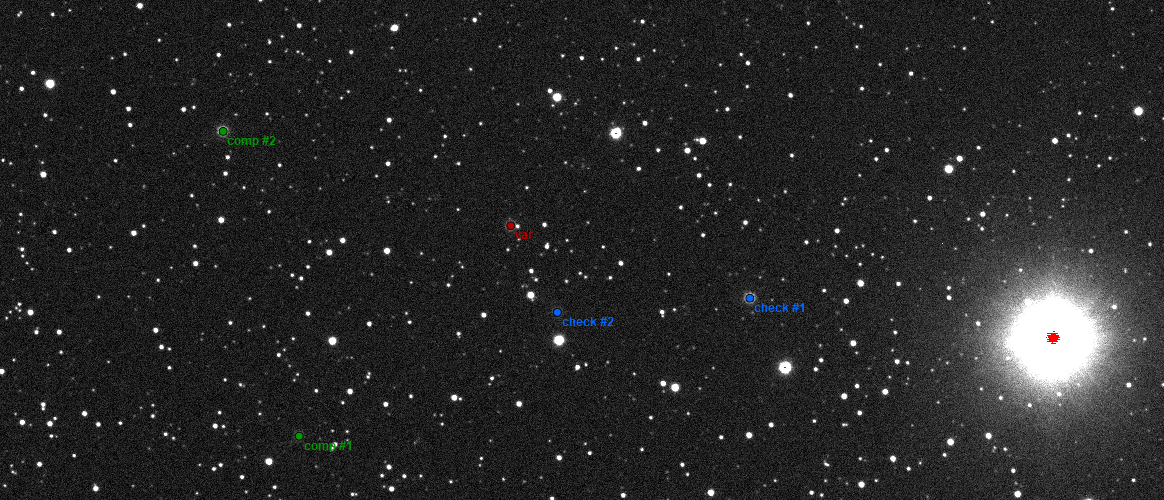Gerrit Leck & Jan Kuske
On November 18th 2019 we were the first group of students to conduct the new FP-experiment “Photometry in Astrophysics”. We observed several variable stars and exoplanet transits using differential photometry. Here we present extracts of our results.
In the night from 23rd to 24th November we used the TURM-X observatory in Extremadura, Spain, to look at the exoplanet transit of WASP-10 b and the variable star BL-Cam.
An essential part of the data analysis is the choice of comparison stars, which for BL-Cam can be seen in the above figure. The first figure on the right shows the measured light curve for the variable star BL-cam. The light curve shows multiple roughly sinoidal oscillations, the simplest expectable behaviour of a variable star. The period was determined to approximately 0.04 d in excellent agreement with the value given by the International Variable Star Index.
The light curve obtained for WASP-10b, shown in the second figure, roughly resembles the typical shape of a transit lightcurve which was used as a fit function (blue line). The distribution of data points suggests an unexpected increase in the measured flux with time. The center of transit was found to be at 9.08 pm, in good agreement with the prediction from the Exoplanet Transit Database. However, our estimated mass ratio of planet and star was 0.21 compared to 0.14 as determined from data of other observations.
Furthermore, we analysed data of the exoplanet transit of HAT-P-37b and the variable stars GSC03553-00845 and ASASSN-V J004423.08+281313.9.



